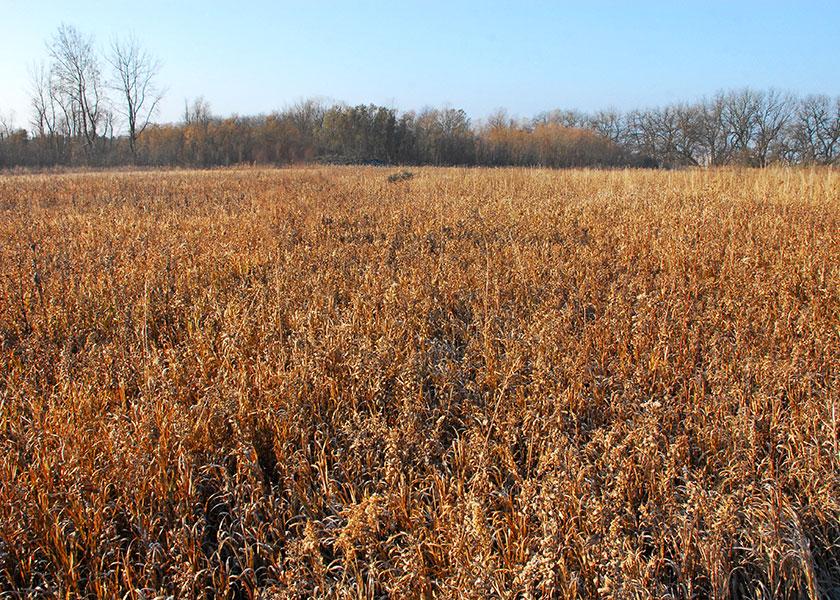Conservation and CRP Rates Discussed in Latest House Panel Hearing

During a House Agriculture Conservation, Research and Biotechnology Subcommittee hearing, lawmakers discussed concerns about the ability of the Natural Resources Conservation Service (NRCS) and Farm Service Agency (FSA) to manage new climate-related funding, staffing challenges, and CRP payment rates.
Leaders of the NRCS and FSA are tasked with addressing staffing shortfalls to deliver conservation and farm programs and implement new climate-related funding included in the Inflation Reduction Act (IRA). An analysis by the Congressional Budget Office (CBO) suggested that the NRCS might only be able to spend around $3.9 billion of the $4.95 billion allocated to it under the IRA for the Regional Conservation Partnership Program (RCPP).
Terry Cosby, NRCS Chief, expressed confidence in the agency's ability to administer these funds, mentioning a recent notice of funding availability that made up to $500 million available for FY 2023. The influx of IRA money has allowed the NRCS to offer more contracts under programs such as the Environmental Quality Incentives Program (EQIP).
Lawmakers questioned the barriers to hiring new staff, to which Cosby replied that a lack of college graduates in relevant fields was a limitation. The agency is collaborating with land grant universities to address this issue. The agency has received 1,500 applications for 200 openings for soil conservationists around the country, although it is murky how many will meet all the requirements.
Who understands carbon sequestration?
Questions were also raised about the current knowledge gap around carbon sequestration and its impact on current and future programs. Both Cosby and FSA Administrator Zach Ducheneaux emphasized the importance of accurate data for driving enrollment and participation in these programs.
House Ag Chairman G.T. Thompson (R-Pa.) Thompson added that he also thinks lawmakers should revisit restrictions placed on the IRA funding that look to target it to climate-related efforts, saying he believes local resource concerns should guide how it is spent.
“We can't prioritize one natural resource concern over all others and we shouldn't prioritize one solution above all others,” he said.
On the farm bill front
Thompson raised the possibility of bringing some IRA conservation funding into farm bill baseline. He used the hearing to approach a big issue: The nearly $20 billion in funding for conservation programs contained in the Inflation Reduction Act (IRA).
The funding is not currently included in the baseline for the next farm bill, and Thompson suggested that a portion of the funds should be brought into the baseline. That would make it easier for lawmakers to shift those funds to other efforts in the farm bill.
Included in the funding were $8.45 billion for the cost-sharing Environmental Quality Incentives Programs; $3.25 billion for the Conservation Stewardship Program, directed toward working lands; $4.95 billion for the Regional Conservation Partnership Program, which coordinates stewardship on multiple properties; $1.4 billion for the Agricultural Conservation Easement Program; $1 billion for conservation technology assistance; and $300 million to measure carbon sequestration and greenhouse gas reductions from conservation practices.
Discussion about the Conservation Reserve Program (CRP) focused on rental rates for transitioning farmland to conservation and the competition with farmers for prime land. Both Ducheneaux and Cosby highlighted the efforts to provide data and incentives to make the best choices for land use and conservation.
Some lawmakers say the CRP is paying farmers to take land out of production that competes with farmers looking to rent farmland. The rental rates were capped in the 2018 Farm Bill, but USDA has offered incentives and adjustments to CRP rents in a bid to attract more acres.
Subcommittee member Brad Finstad (R-Minn.) said CRP payment rates were higher than they should be and making it hard for farmers to find additional cropland. Increasing program payments as the Biden administration did in 2021 in a bid to boost CRP enrollment “incentivizes farm country to take high-quality land out of production,” Finstad said.
Young farmers especially say high CRP rates have essentially “forced them to compete with the federal government” for land, Finstad said. But Ducheneaux countered that CRP incentives “give the producers a meaningful choice” about what to do with their land. He said FSA was looking at refining its use of an erodibility index to more precisely evaluate land that is being offered for enrollment.
“The choice that they [landowners] make with their resources is not for us to dictate. Our job is to get the opportunity out there in front of them, so that they make the best choice,” Ducheneaux said.
Background
About 23 million acres are currently enrolled in the program at the end of March, including 8.4 million in general sign-up, which is aimed at larger tracts; 8.2 million in continuous sign-up, which is focused on smaller, more environmentally sensitive tracts, and 6.4 million in the grasslands option.
Two million acres enrolled through the general or continuous sign-up options are scheduled to leave the program in October unless they are re-enrolled, including 1.5 million acres enrolled via general signups and 500,000 acres enrolled via continuous CRP efforts.
Contracts currently scheduled to expire in September 2024 fall to only 480,000 and rise to just shy of 1 million acres in September 2025. Through the end of March, just over 44,000 acres were enrolled via the continuous signup in FY 2023 while 888,000 acres were enrolled in FY 2022. Annual CRP enrollment is capped at 27 million acres under the 2018 Farm Bill.







